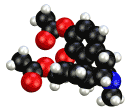
The
problem studied related to the current heroin epidemic that is plaguing Britain, and
in
particular a small market town in the Midlands, which was
the focus of this study. Essentially
this dissertation aimed to show that Howard Becker’s ‘Moral Crisis Production’
model (Lidz & Walker 1980) could be successfully adapted to fit a contemporary
crime epidemic, showing that a moral panic had been produced along with the
development of the outbreak.
Selected ‘Moral Crisis Agents’ and individuals
belonging to the heroin scene (i.e. addicts) were interviewed. Furthermore the local paper was
analysed over an seven-year period in order to chart the dramatic rise in the number of
heroin related articles. The methodological techniques of participant observation
and questionnaires were also applied under the framework of a multi-method
approach.
Representatives were interviewed from the police and
the media, as well as individuals with backgrounds in drug treatment and politics. The
fundamental aim was to establish their ‘professional’ views regarding both the reality
of the problem, and the existence of a moral panic. A heroin addict, a recreational user
and an ex-addict were also interviewed on a similar basis. These three individuals
were contacted and selected through the technique of snowballing, with the
intention of interacting with people who had not only been part of the heroin scene for many years,
and thus contain a vast amount of knowledge, but who also had numerous
contacts and heroin addict friends.
The results of the interviews indicated a strong
acknowledgement in the existence of the epidemic in real terms, with all interviewees
believing that heroin use in the town had dramatically increased over the past 5 years. These results were reiterated by the findings of the
content analysis of the local paper,
The application of Becker’s model also indicated that
the foundations for a moral panic did indeed exist (Chapter 5) and that it had been
successful (Chapter 6) to a certain degree. However a possible flaw with Becker’s model maybe his
failure to realise the importance of the media as more than a mere communication channel
for other crisis agents, it could be argued that it was a crisis agent in itself, and its role in
creating the panic was hugely significant.
![]() Copyright(C) 2007
- 2025. All rights reserved.
Copyright(C) 2007
- 2025. All rights reserved.